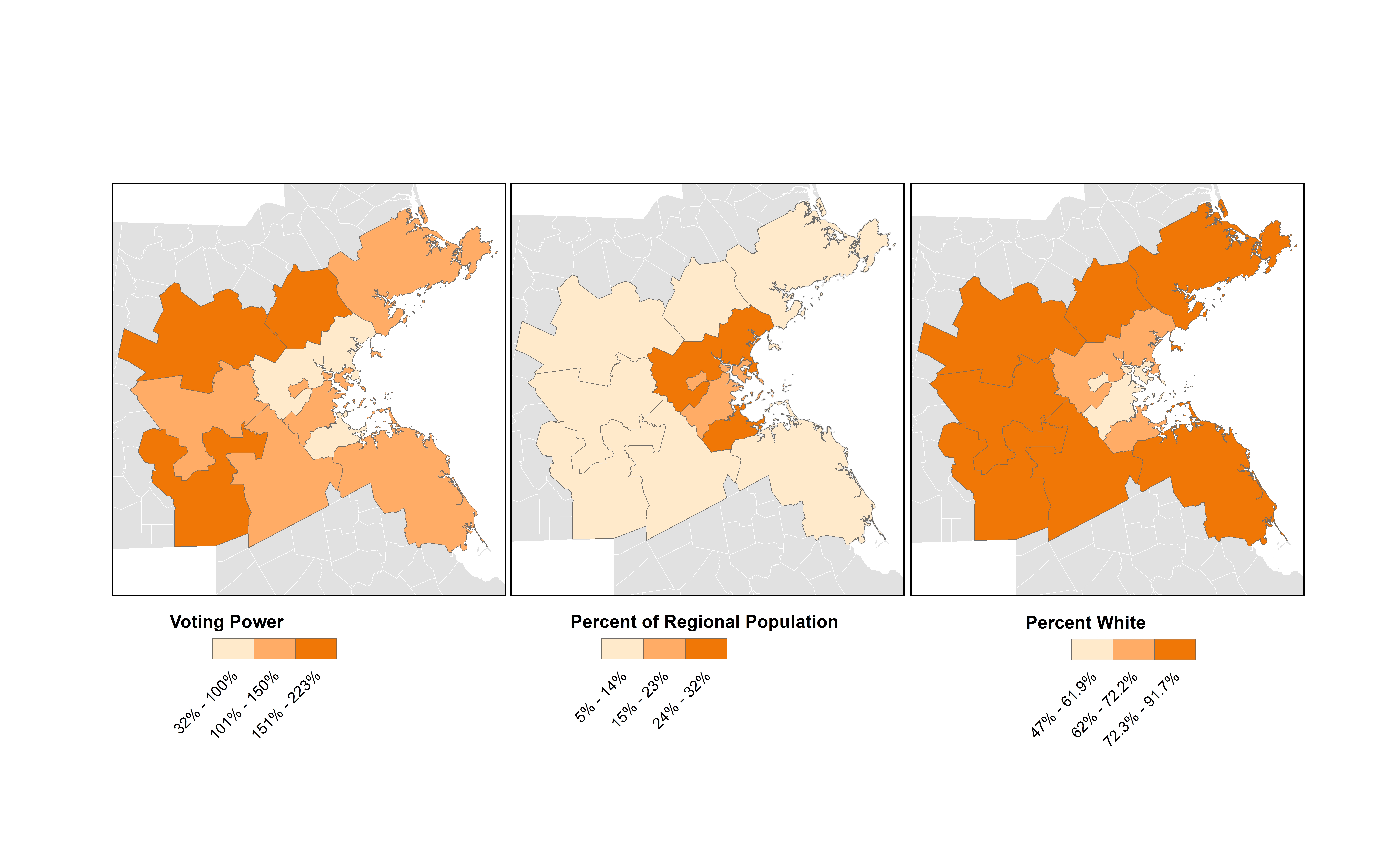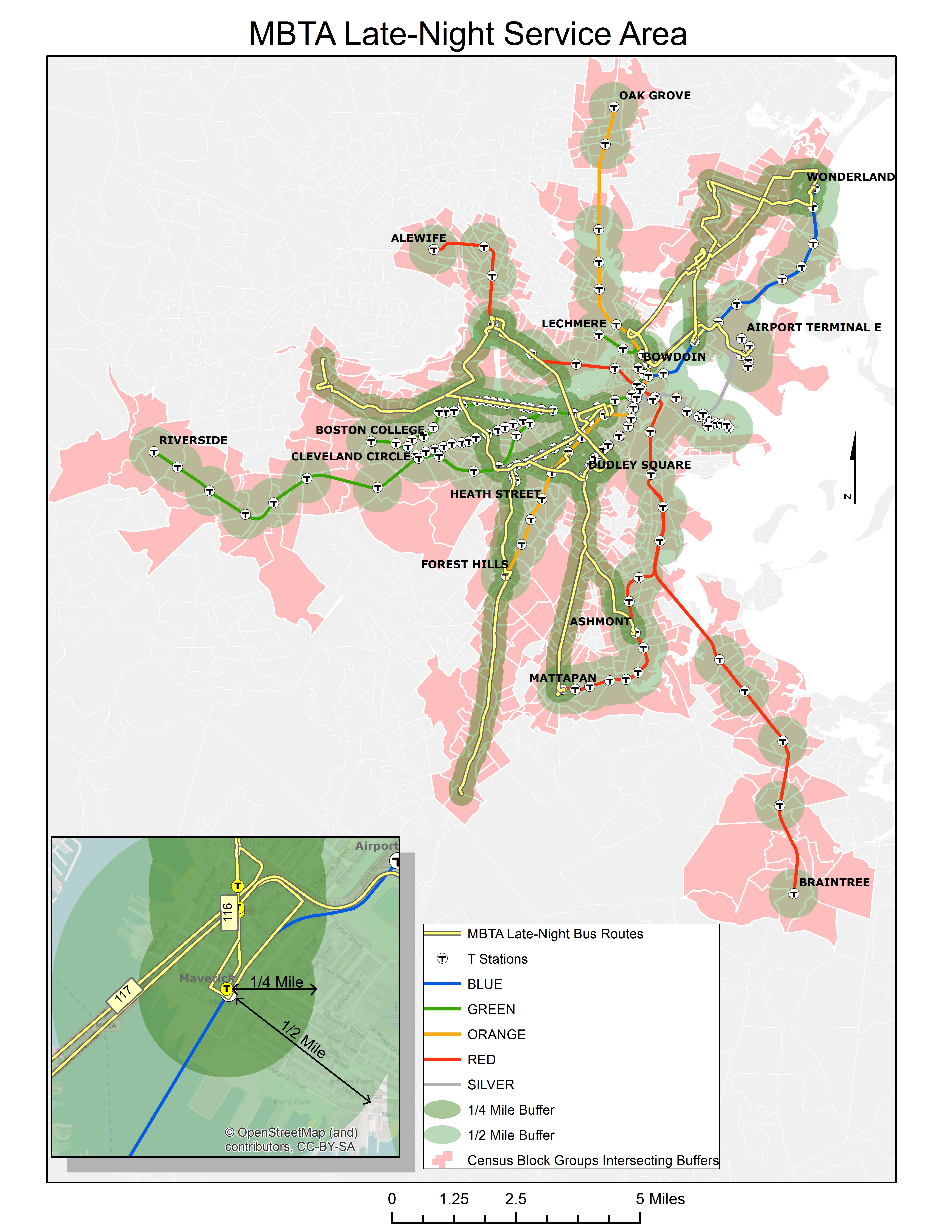By Nancy D. Lamontagne
Marcos Luna, Ph.D., professor at Salem State University in Massachusetts, has spent much of his career using his skills in GIS and statistical analysis to help communities answer questions that are meaningful to them. Most recently, he provided data that is helping low-income and minority people in Boston achieve equal representation in transportation decision-making and challenge new transit changes.
“I find it important to engage and interact with community groups as colleagues rather than treating them as a customer or the subject of my research,” Luna said. “In the Boston area there are many universities and research institutions, so it is more common than not for researchers to drop into a community, do their work, and then leave. I take a different approach by going to the community and asking them what they need, and then looking for areas where I can help and also get something out of the experience, too.”

GIS and stastical analysis of representation on the Boston-area transportation planning organization revealed that the suburbs had the most voting power (darker oranges in left map) and represented the least percentage of the total population (lighter orange in middle map) and were more heavily white (dark orange, right map). Courtesy of Marcos Luna, Salem State University.
Equal representation in transportation planning
A long-standing relationship between Luna and a community group called Alternatives for Community and Environment led the group to contact Luna about their concerns that transportation decisions were biased toward the suburbs while shortchanging the interests of the inner city. Inner city Boston is home to many low-income and minority communities who depend heavily on public transit, especially to get to and from work.
“They had suspected a structural bias for a long time, and I offered to analyze it statistically to figure out whether there was a bias from a quantitative perspective,” Luna said.
The Boston Region Metropolitan Planning Organization plays a key role in planning and allocating funding for transportation in the greater Boston area. To find out if representation within this organization differed according to where someone lived, Luna combined GIS technology and statistical analyses to identify communities falling within certain jurisdictions and to classify the demographics of those communities.
“We found a relationship between the level of representation and the demographics of those places and also the distance from the core of the city,” said Luna. “The system of community representation in the Boston Region Metropolitan Planning Organization was biased toward the suburbs—higher income, white communities that were likely to be more interested in highways and streets rather than mass transit.”
This data was used to file a legal complaint to with the U.S. Department of Transportation (DOT) Office of Civil Rights. Luna also published a paper detailing the analysis.

A correct equity analysis showed that canceling late night bus and subway (T) service disproportionately impacted low income and minority communities. Courtesy of Marcos Luna, Salem State University.
Fighting for equity by correcting a flawed analysis
Luna also worked with the Alternatives for Community & Environment, Conservation Law Foundation and Greater Four Corners Action Coalition to provide data the groups needed to file a complaint with the DOT asserting that a decision by the Massachusetts Bay Transportation Authority (MBTA) to cut late-night service discriminates against low-income and minority people living in Boston.
Since 2014, the MBTA had run an extended late night service on certain bus and subway lines until around 2:30 a.m. In February 2016, the agency announced it would stop the service even though it had not conducted a legally required equity analysis to find out whether the cancelation would disproportionally affect minority and low-income people.
The MBTA conducted the analysis only after the Federal Transit Administration (FTA) ordered them to do so. Once the analysis was released, the Conservation Law Foundation asked Luna to look it over. “I immediately realized something wasn’t right with the analysis,” he said. “We discovered that they had considered the entire population of greater Boston when doing the analysis rather than examining the people who lived close to the bus and subway lines affected.”
The MBTA had performed the equity analysis using around 175 cities and towns, even though the late night service ran through only around 30 communities (see these maps for a comparison). Decades of research have shown that only people living close to a bus or subway stop use it regularly. In fact, the DOT Office of Civil Rights specifies that this type of equity analysis should consider only people living within a quarter mile of a bus stop and a half mile of a subway line.
“When you conduct an equity analysis by looking only at very large geographic units like a whole city or town, it dilutes the communities affected,” said Luna. “But when you examine the proper distances involved—the buffer areas around these transit lines—you see a very different picture of who is affected. When we did the analysis correctly, it very clearly showed that canceling the services disproportionately impacted low income and minority communities.”
The complaint was filed in July 2016, and the community groups are waiting for a response from DOT and MBTA.
“For both projects, working with the community groups was relatively easy because I’ve worked with them on and off for more than a decade,” said Luna. “This has built up trust and understanding. I know what to expect and what their priorities are, and I constantly checked in with them to make sure we were on the same page.”
Luna says that he doesn’t know what kind of project he will work on next. “I will regularly interact with these groups and listen for more opportunities to jump in and offer help.”
Nancy D. Lamontagne is a freelance science communicator and a contributing writer for Creative Science Writing and the Thriving Earth Exchange.
Related articles:
Complaint says MBTA violated civil rights by ending late-night service (Boston Globe)





